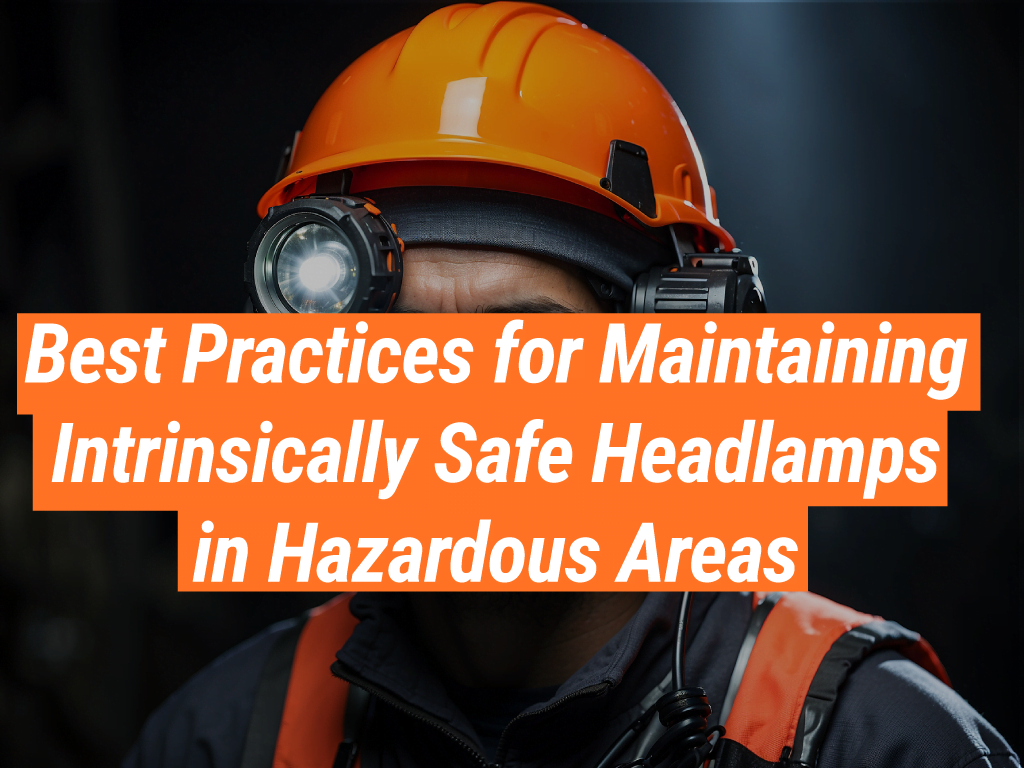When working in hazardous environments, safety is paramount. One crucial aspect of safety is ensuring adequate lighting, which is where intrinsically safe headlamps come into play. These headlamps are designed to operate safely in potentially explosive atmospheres without causing ignition. At Intrinsically Safe Store, we understand the importance of these devices and the need for their proper maintenance. In this article, we will explore the best practices for maintaining intrinsically safe headlamps in hazardous areas. We invite you to visit our website to learn more about our range of intrinsically safe products.
Understanding Intrinsically Safe Headlamps
Intrinsically safe headlamps are designed to limit electrical and thermal energy to a level below what is required to ignite a specific hazardous atmospheric mixture. They are essential in industries such as mining, oil and gas, and chemical processing, where explosive atmospheres are common.

Regular Inspection and Cleaning
Regular inspection and cleaning are vital to maintaining the functionality and safety of intrinsically safe headlamps. Dust, dirt, and grime can accumulate on the lamp and lens, reducing light output and potentially causing overheating. Cleaning should be done with a soft cloth and non-abrasive cleaner to avoid damaging the lens.
Battery Maintenance
The battery is a critical component of any headlamp. For intrinsically safe headlamps, it’s essential to use only manufacturer-approved batteries and to replace them regularly. Using incompatible batteries can compromise the safety of the headlamp and potentially lead to ignition in a hazardous environment.
Regular Testing
Regular testing is another crucial aspect of maintaining intrinsically safe headlamps. This includes checking the light output, battery life, and any safety features such as emergency modes or flashing signals. Any issues detected during testing should be addressed immediately to ensure the headlamp remains safe to use.
Proper Storage
When not in use, intrinsically safe headlamps should be stored in a clean, dry place. This helps to prevent damage from moisture, dust, or corrosive substances. The storage area should also be free from extreme temperatures, as these can affect the performance and lifespan of the headlamp.
Training and Awareness
Finally, it’s essential that all users of intrinsically safe headlamps are adequately trained in their use and maintenance. This includes understanding the importance of regular inspection, cleaning, battery replacement, testing, and proper storage. Awareness of these best practices can significantly enhance the safety and effectiveness of intrinsically safe headlamps in hazardous areas.
Conclusion
Maintaining intrinsically safe headlamps is crucial for ensuring their continued performance and safety in hazardous environments. By following the best practices outlined in this article, you can help to prolong the lifespan of your headlamps and ensure they remain safe to use. At the Intrinsically Safe Store, we are committed to providing high-quality, intrinsically safe products and educating our customers on their proper use and maintenance. If you have any questions or need further advice on maintaining your intrinsically safe headlamps, please don’t hesitate to contact us.


























